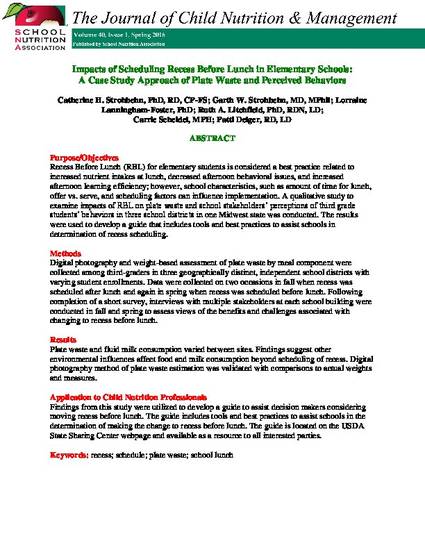
Purpose/Objectives This study reported food defense planning, training and best practices implemented in public schools in Montana, Wyoming, South Dakota, North Dakota, Iowa, Minnesota, and Wisconsin. Methods An internet-administered survey was sent to 1,501 school food authorities or food service directors (FSDs) in public schools. Survey items included frequency of implementation of 31 food defense best practices adapted from the work of Yoon and Shanklin (2007) and Yoon (2007). Focus was on practices relating to employee management, utility security, facility security, and communication. Additional items requested information about food defense planning, food defense training, operational, and demographic characteristics. Results Response rate was 36% (543 usable responses). Most (67.2%) survey respondents reported district enrollment < 2,500 students. The majority reported onsite (54.3%) or combination onsite/commissary (33.0%) food production systems. Few (14.5%) had a food defense plan and 21.6% reported some food defense training. Of the 31 listed practices, 16 practices had mean frequencies of implementation between most of the time and always (M > 4.0 on a 5-point scale with 5 = always). Of these, 13 practices were the responsibility of the foodservice operation, such as inspecting food packages, restricting access to food storage and production areas, training employees about safe chemical use, monitoring food production areas, securing outside entrances and storage units, restricting access to central utility controls, and having procedures to follow if utilities were compromised. Six practices (19.4%) were implemented less than some of the time (M < 3.0): doing criminal background checks on employees periodically after hire, implementing a policy that all delivery trucks be locked when unattended, communicating with emergency responders about food defense and food safety, communicating with administrators about food defense, and monitoring drains and water lines for tampering. Application to Child Nutrition Professionals Food defense practices under the control of the foodservice operation had high rates of implementation. Practices that overlapped with district control, such as monitoring drains and water lines or doing criminal background checks on current employees, had low reported frequencies of implementation. There is a need to involve district administrators in food defense planning.
Available at: http://works.bepress.com/catherine-strohbehn/46/

This article is published as Klitzke , C. & Strohbehn, C.H. Foodservice Directors’ perceptions of food defense in schools. Journal of Child Nutrition Management, 39 (1). Posted with permission.